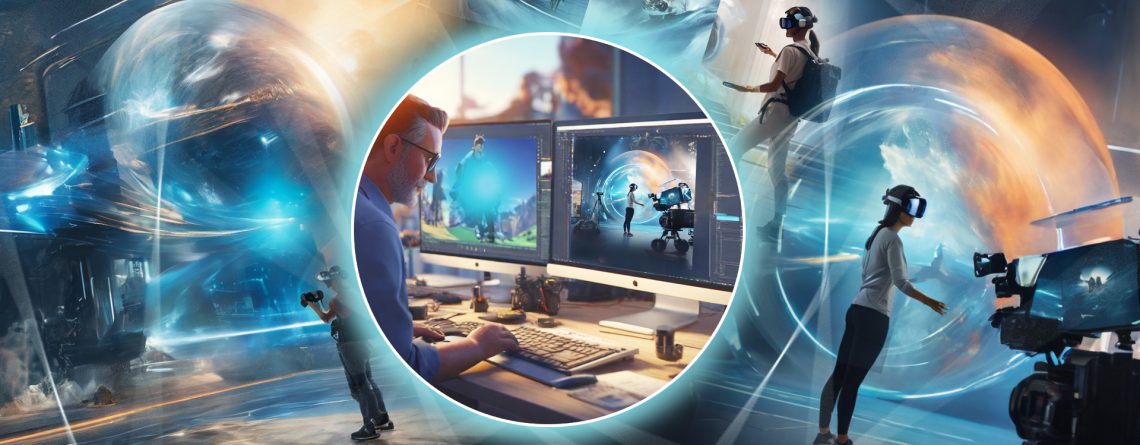The Future of Animation: Trends, Technologies, and Predictions
admin2025-06-13T08:09:31+00:00Animation is on the brink of a revolutionary journey characterized by innovative technologies, cutting-edge trends, and perceptive forecasts. Virtual reality stands poised to completely transform the animation experience, drawing viewers into dynamic and captivating stories. Real-time animation and rendering technologies are pushing the boundaries of creative expression, empowering animators to work more productively and experiment with novel storytelling strategies. Artificial intelligence is emerging as a potent ally in the animation process, automating certain tasks and unlocking new creative possibilities. The landscape is evolving to offer viewers more interactive and personalized content, from non-linear narratives to augmented reality integration.
In response to global issues and a growing emphasis on sustainability, the animation industry is weaving social and environmental themes into its narratives. The future appears brighter and more immersive with the fusion of gaming and animation, as well as advancements in holographic displays and 3D printing. Character personalization, global collaborations, and streaming platforms will all play crucial roles in the future of animation studios. Innovation, diversity, and a commitment to expanding the horizons of visual storytelling will remain fundamental to this medium’s evolution.
Key Animation Trends to Watch in 2025
1. Real-Time Animation:
With the rise of real-time rendering software, animators can now create high-fidelity visuals instantly. This not only boosts efficiency but also supports virtual production pipelines that blend physical and digital environments.
2. E-Games:
The convergence of technology and entertainment in e-games immerses players in interactive virtual worlds, shaping the future of gaming. Advancements in AI-driven character animation and immersive virtual reality offer unprecedented levels of realism and engagement.
3. Multiverse:
Animation in the multiverse is poised for a revolutionary future, blending diverse realities with cutting-edge technology to create immersive, interconnected storytelling experiences that transcend traditional boundaries.
4. AI Production Control Tools:
AI-driven animation production tools promise unparalleled efficiency and creativity, streamlining workflows, enhancing collaboration, and pushing the boundaries of visual storytelling.
3. Prompt Engineering in Art Generation:
Artists are embracing prompt engineering to guide AI models in creating concept art, backgrounds, and even character designs—enhancing both speed and creative diversity.
4. Virtual Production:
The integration of virtual and physical elements in filmmaking through technologies like virtual sets, augmented reality (AR), and virtual reality (VR) will play a significant role in the future of animation and filmmaking.
5. AI and Machine Learning:
AI is revolutionizing every stage of the pipeline—from automating in-betweening to enhancing facial animation and motion capture. Incorporating artificial intelligence and machine learning into animation workflows could streamline processes, enhance character animations, and automate certain production aspects.
6. Extended Reality (XR):
XR technologies (AR, VR, MR) are pushing the boundaries of animated content, enabling fully immersive, multisensory experiences beyond traditional screens.
7. Blockchain in Animation:
Blockchain technology may increase to secure intellectual property, manage digital rights, and create transparent transactions within the animation industry.
8. Interactive and Non-Linear Storytelling:
Interactive and non-linear storytelling techniques may become more common, allowing viewers to influence the narrative. Non-linear, audience-driven narratives are becoming standard across interactive platforms and VR animation experiences, giving users more control over the story’s direction.
The Future: What’s Next? Multiverse storytelling, Gamified animation, Holographic animation and Character personalization.
9. Deep Learning for Animation:
Deep learning algorithms may automate certain animation tasks, such as in-between frames or predicting character movements, speeding up the animation production process. Automated lip sync, body motion prediction, and intelligent frame generation are transforming workflows using machine learning in animation.
10. Environmental Animation:
There’s a growing shift toward sustainable animation – addressing ecological issues and promoting environmental consciousness. This may gain prominence amid increasing focus on sustainability, climate conservation and social impact.
11. 3D Printing in Stop-Motion:
Combining traditional stop-motion animation with 3D printing technology may result in producing highly detailed, customizable models that speed up physical animation processes.
12. Bridges between Existing DCC Tools and Real-Time Renderers:
Development in hardware has elevated the standards of real-time render tools, breaking the hurdles on renderer dependency with DCC. Online and GPU-based render rigs provide flashing results.
13. Global Collaboration:
Animation studios and professionals may increasingly collaborate across borders through remote work and cloud-based collaboration tools, leading to a more diverse talent pools and seamless global animation co-productions.
Toonz Media Group: Leading the Future of Animation
Toonz Media Group is at the forefront of adopting the latest trends and technologies, aiming to position itself as the global leader in kids and family entertainment. Through various training programs, animators at Toonz studios gain hands-on experience with the latest tools and animation production software, enabling the company to produce award-winning animated series and feature films. These initiatives have cemented Toonz’s reputation as a pioneer and industry thought leader in the AVGC-XR sector.
Transform your ideas into world-class content. Partner with a future-ready animation production company—connect with Toonz today.

